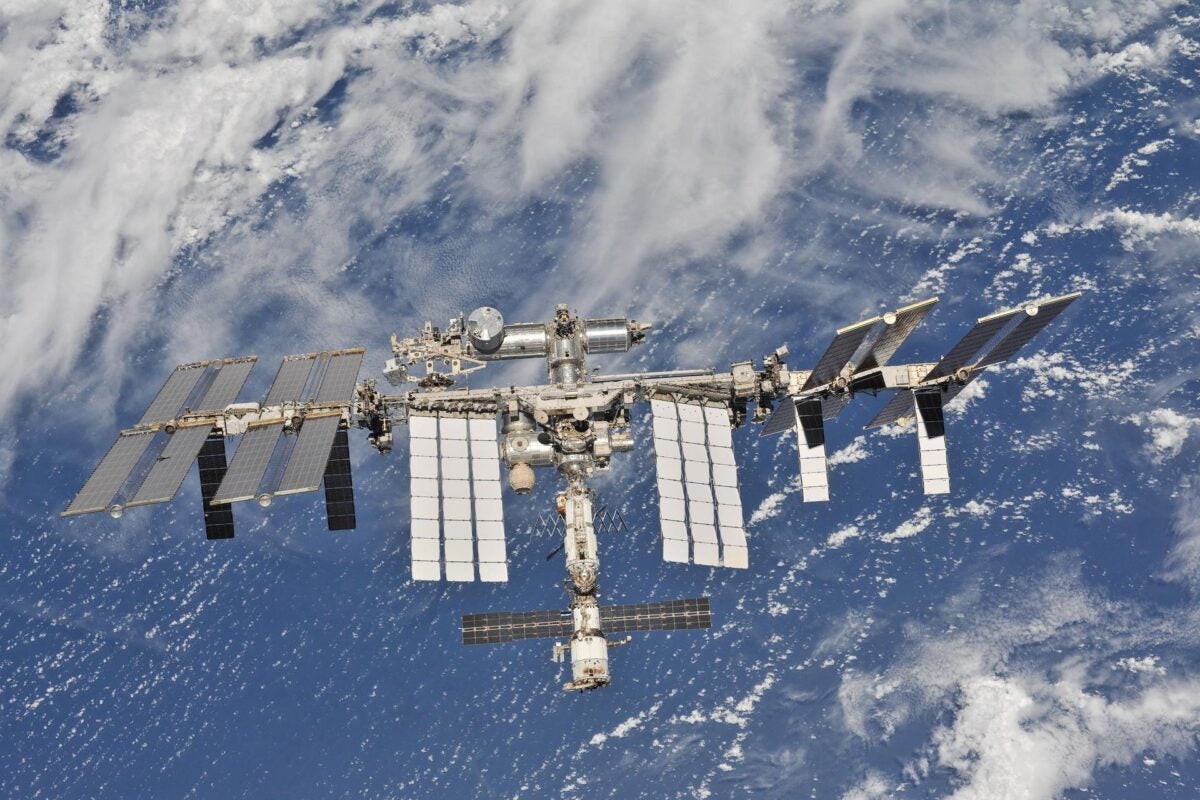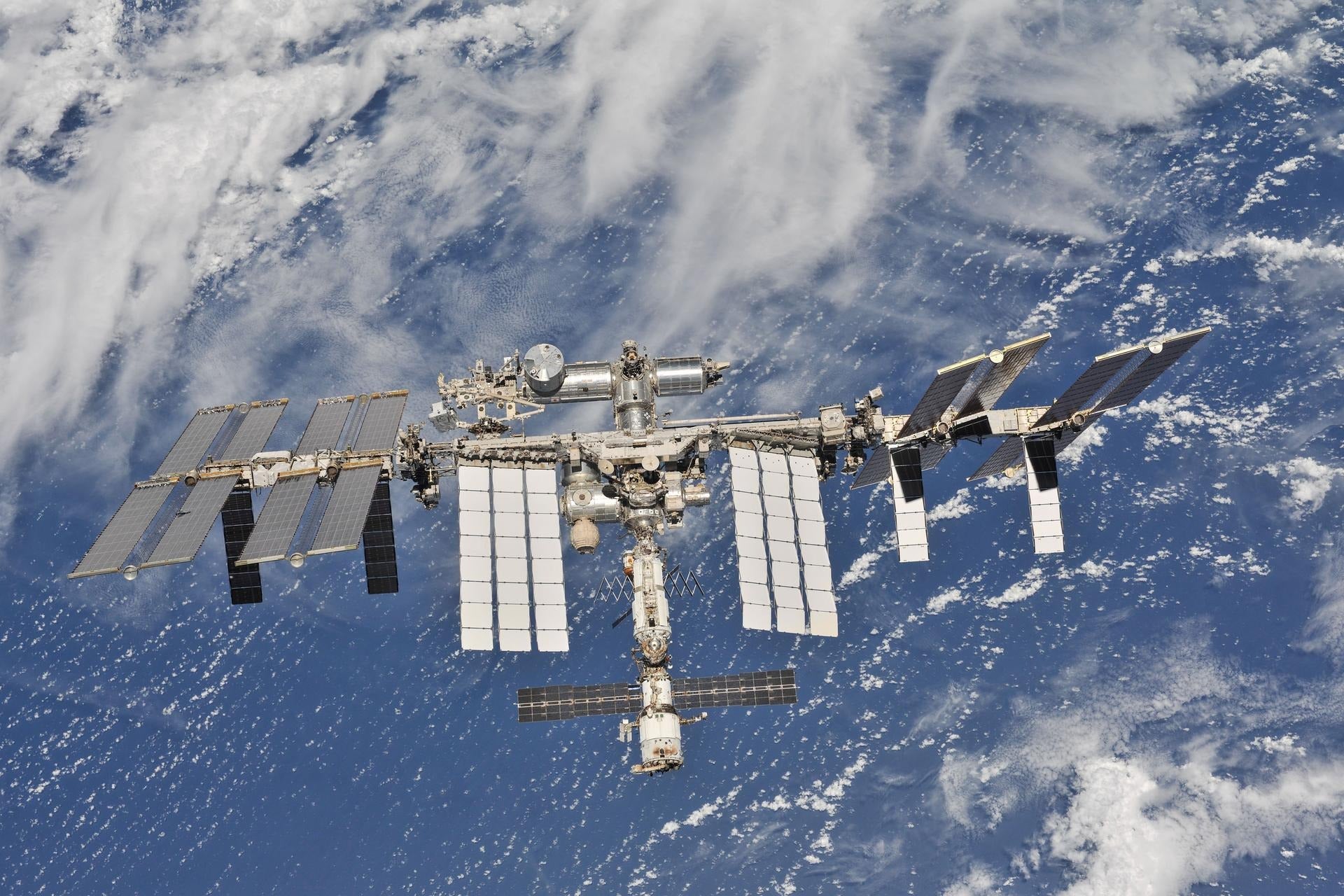
The International Space Station, photographed by astronauts in October 2018. Photo credit: NASA
Although it may be hard to believe, the International Space Station (ISS) is nearing the end of its operational life. Some readers may even have been born after the first ISS section was launched in 1998 and have never lived in a world without the ISS hovering overhead. The ISS took years to build and required a total of 37 US space shuttle flights and five Russian rocket launches before the station was completed.
Related: The International Space Station turns 25
Over the past quarter century, more than 270 people have visited the ISS to help build the station, live there, conduct scientific experiments and medical research, and – more recently – support various commercial space projects. In its many years of service, the ISS has proven to be a boon to the five space agencies (the Canadian Space Agency, the European Space Agency, the Japanese Space Agency, Russia’s Roscosmos, and NASA) that share operational responsibility for the station.
Narrowing down the options
Nevertheless, NASA plans to decommission the ISS in 2030. Although the ISS is the largest space station ever built (currently dwarfing the relatively new Chinese Tiangong Space Station), it is extremely expensive to operate and requires regular boosts to maintain its orbit. In addition, much of the technology on board the ISS is simply outdated. NASA and its partners never planned for the ISS to operate forever, and these organizations are now planning for the time when operations aboard the ISS will cease permanently.
When NASA considered the end of the ISS, it considered several options. One of them was to move the ISS to a higher (and more stable) “parking orbit,” where it could be decommissioned with virtually no crew. But without humans to maintain the station, the hardware would likely begin to fail and gradually fail. Importantly, even a higher orbit would eventually decay and the ISS would crash to Earth.
NASA also briefly considered dismantling the station, but this would be extremely costly. There was also the question of what to do with a used ISS module once it was back on board. solid landTo make matters even more complicated, without the Space Shuttle and its cargo bay to bring individual modules down from the station, such a plan is virtually impossible.
The only realistic option – and the one NASA ultimately chose – is to deorbit the space station and let it come through the atmosphere and crash to Earth.
Deorbiting can be a controlled or uncontrolled process. For example, a previous US space station, Skylab, crashed to Earth in July 1979 after a largely uncontrolled deorbit. Uncontrolled deorbiting is cheaper (basically free) but carries the risk of hitting population centers, potentially injuring people, or damaging buildings – some parts of Skylab landed in Australia, but fortunately no one was hurt.
A controlled deorbit would allow the ISS to be brought to Earth at a time and place chosen by NASA, while minimizing risk to people and infrastructure. This is the option NASA has chosen. And given its enormous size – about the size of a football field – the ISS will likely land over a vast area of the South Pacific, far from populated areas.
Bring down the station
So how exactly will NASA go about bringing down a structure as massive as the ISS?
Even at its current orbital altitude of around 400 kilometres above the Earth’s surface, the station is still subject to the drag of the Earth’s atmosphere. According to ESA’s current plans, the station’s natural orbital descent will be amplified during landing through controlled manoeuvres to lower its altitude even further.
Once the last crews have left the ISS, NASA plans to allow the station’s orbit to continue to descend for 12 to 18 months, then allow a final descent from orbit by a modified version of SpaceX’s highly successful Dragon spacecraft. This one-of-a-kind vehicle will be larger than a standard Dragon, carry six times the fuel, and have four times the engine power. The Dragon descent vehicle will use 46 Draco engines to perform multiple fuel burns to progressively lower the orbit, as well as a final burn to initiate the station’s final descent.
As it descends through the atmosphere, the station will become extremely hot due to friction with air molecules. This will cause the station to break apart and mostly burn up. Many parts of the ISS will simply be consumed by the fire during reentry, while some of the larger and more durable parts (such as the beams that hold the station together) will likely survive the final dive and hit the ocean, sinking to the sea floor.
SpaceX plans to complete the deorbit vehicle by 2028 and NASA plans to conduct the final deorbit operation in 2031.
The next big step
NASA’s next major space station project is the Lunar Gateway, which will be smaller than the ISS but much more complex as it will orbit the Moon rather than the Earth. There are currently no plans to directly replace the ISS.
It is likely that at least one or two of the numerous smaller space stations currently being developed by private space companies will one day make it into space. These stations could provide further opportunities for scientific and medical research, although they will probably focus largely on space tourism. Axiom Space, for example, has already published detailed plans for building a space station in several sections that would be put into orbit by successive launches.
Regardless of what comes after, the ISS will forever be remembered as a groundbreaking piece of space technology that required the combined efforts of many nations and countless individuals to build, and its legacy of achievement will be hard for its successors to top.
Related: Archaeologists conduct first “space excavation” on the International Space Station

